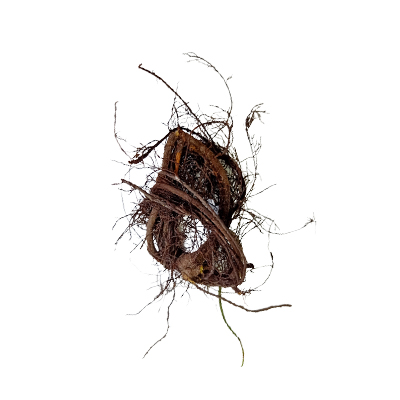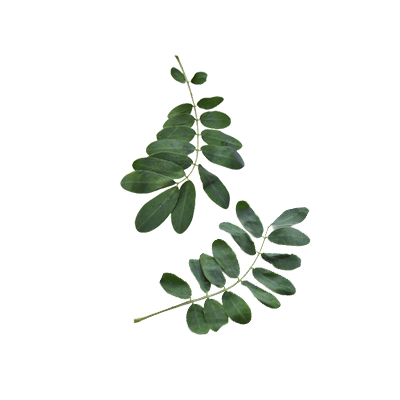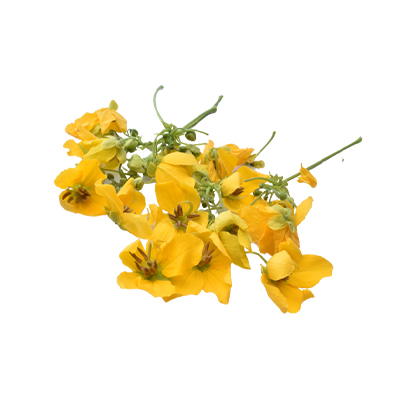Golden Senna
Senna surattensis (Burm.f.) H.S.Irwin & Barneby
Fabaceae
Location in our garden
Principal
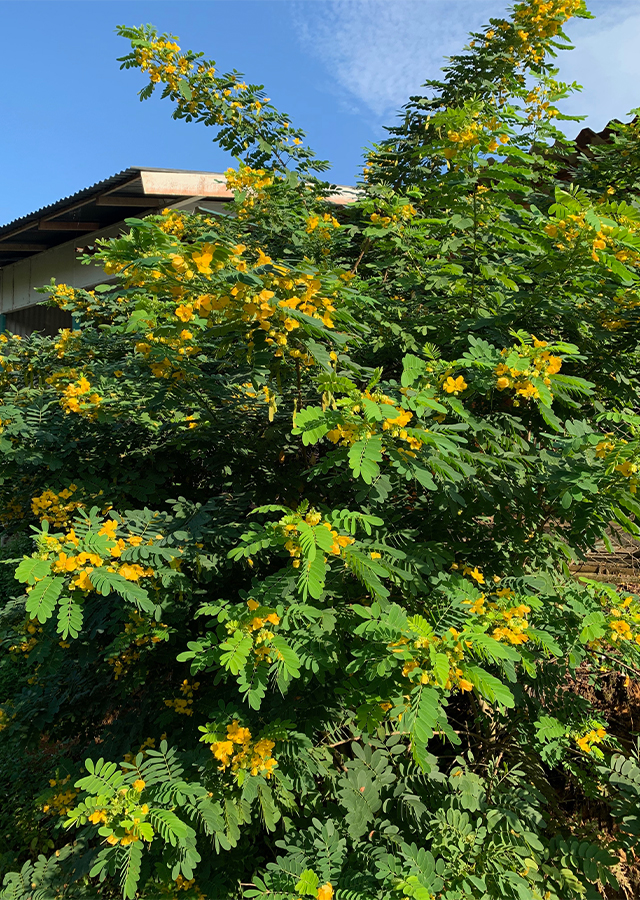
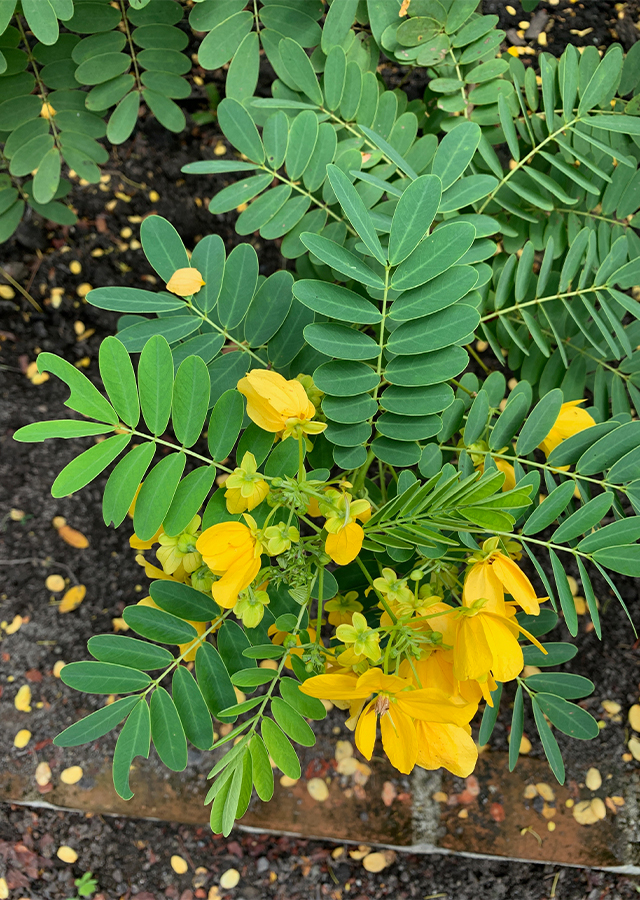
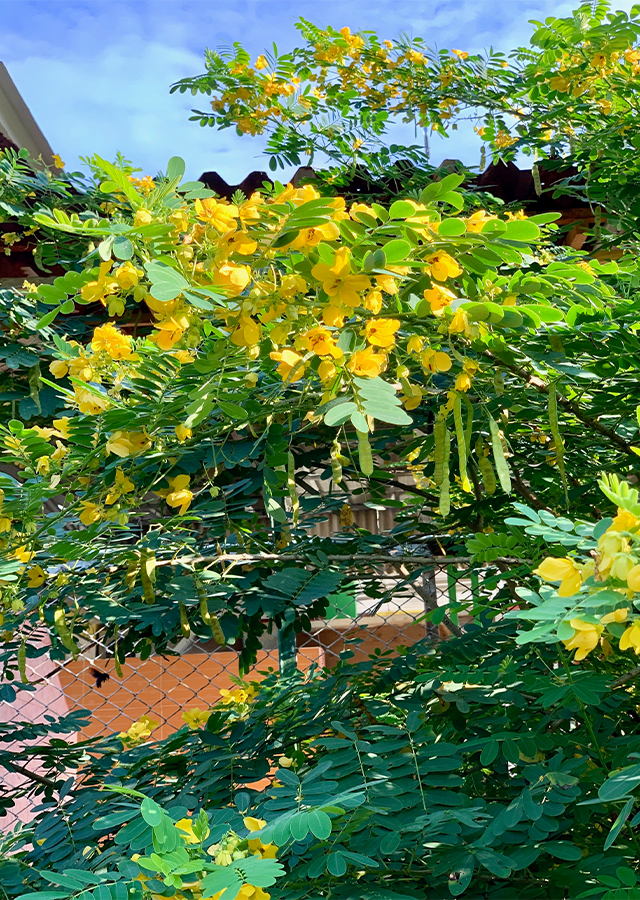
Synonym
Cassia surattensis Burm.f.
Habitus
Shrubs. A shrub or small evergreen perennial tree, can grow up to 7 m tall
Part Used
Leaves
Flowers
Roots
Growing Requirements
Full Sunshine
Need Shade
Habitat
Forest
Coastal
Grassland
Overview
Golden senna considered to originate from South-East Asia, possibly Malaysia and Australia. It is harvested from the wild for local use as a food and medicine. It is cultivated as a popular ornamental in the tropics such as Hawaii, Taiwan, and Hong Kong because of its tolerance of sulphur dioxide pollution.
Vernacular Names
Huang huai jue ming (Chinese), Dok sake (Laos), Gelenggang (Malaysia), Khilek-ban (Thai), Kalamona Hawaiian), and Muớng biển (Vietnamese).
Agroecology
A fast growing species, widely introduced to tropical, subtropical and temperate-warm climate zone. It requires full sun, or at most a slight shade and prefers moist soils, well- drained soils, fertile loamy soils, but grows best in rich soils maintain constantly humid. In South-East Asia, the species favours teak forests and marshy soils, up to 300 m. In Hawaii, it has been reported to also grow in volcanic areas and coastal forests.
Morphology
- Barks - brown-greyish smooth .
- Branches - glabrous to puberulous.
- Leaves - with 4-9 pairs of leaflets; petiole 1.5-5 cm long; rachis up to 15 cm long, with a clavate gland between the 2-4 lower pairs of leaflets; leaflets ovate to ovate-oblong, 3-10 cm × 1-5 cm, glabrous above, sparsely hairy and glacous below.
- Flowers - in racemes 0.4-2.5 cm long, pedicels 15-25 mm long, bracts submembranous, ovate to lanceolate, 2-7 mm long, persistent until anthesis, then deciduous, the lowermost sometimes subtended by a clavate nectary; calyx lobes oblanceolate to oblong obovate, the outermost 3-4.4 mm long, inner ones 5.5-8 mm long; petals bright yellow or yellowish orange.
- Fruits - flat pod, glabrous with papery valves, measuring about 7-10 cm lon and 1 - 1.5 cm wide, contains about 15-25 seeds.
- Seeds - glossy, black, flattened and measuring about 8 mm long and 4 mm wide.
Cultivation
Propagated by seeds. It has a hard seedcoat. Pour a small amount of nearly boiling water (be careful not to cook the seed) then soak for another 12-24 hours in warm water. If needed, carefully make a nick (be careful not to damage the embryo) and soak for another 12 hours before sowing.
Chemical Constituents
Flavonoids, quercetin, quercetin 3-O-glucoside 7-O-rahmnoside, rutin, alkaloids, polyphenols, beta sitosterol, saponins, tannins, steroids, triterpenoids.
Traditional Medicinal Uses
- The roots are used to treat gonorrhoea, the leaves for dysentery, and the flowers as a general purgative or laxative (to treat constipation).
- Leaves are useful in diabetes and blennorrhoea.
- A decoction of the roots is used against gonorrhoea
- In Chinese traditions, leaves are used to treat constipation problem, sore throat and cough by consuming the infusion of boiled leaves orally.
Part Used
Reference Sources
- Hou, D., Larsen, K., Larsen, S.S. (1996.) Caesalpiniaceae (Leguminosae-Caesalpinioideae). Flora Malesiana Series I 12(2): 409-730.
- PROSEA. (2016). Senna (PROSEA Medicinal plants). https://uses.plantnet-project.org/en/Senna_(PROSEA_Medicinal_ plants). 14-08-2020.
